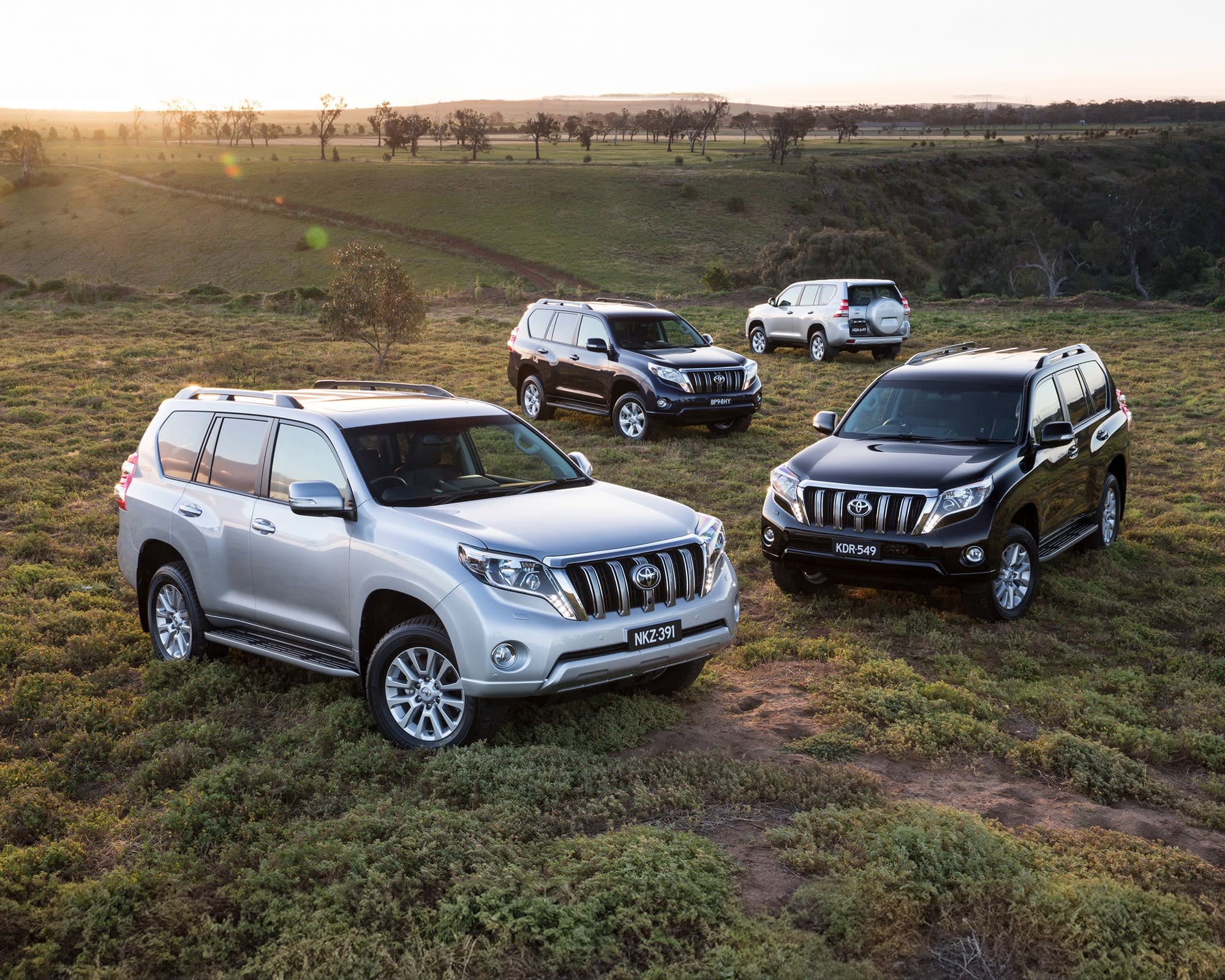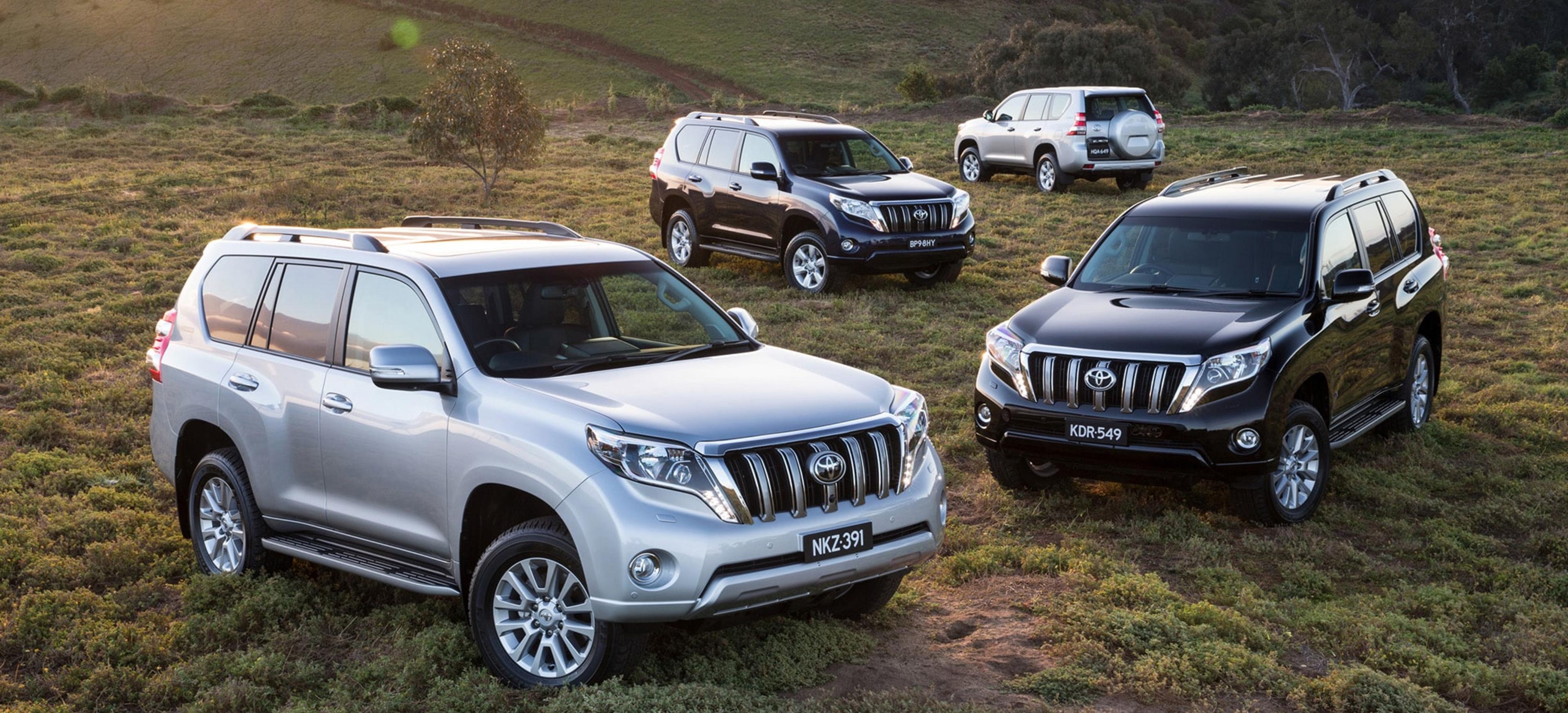
Review: 2014 Toyota Prado GXL
Posted in Vehicle Reviews
Review: 2014 Toyota Prado GXL
Whether it is camping on the beach, pick-ups from school or doing the Saturday sport, the Toyota Prado will be found anywhere and everywhere.
The 2014 Toyota Prado was the mid-life upgrade model, adding some bits and pieces when compared to the outgoing 2013 vehicle. Visually, there are only a couple of noticeable differences, but it’s on the inside where the bulk of the changes have been made.
With four variants the choice remained broad between models with the GX available with a turbo-diesel engine and an option of 5 or 7 seats, plus the GXL, VX and Kakadu, which are all available with either turbo-diesel or petrol engines and 7 seats.
When new, pricing started from around the mid-$50,000s for the GX and works all the way up to just a few thousand over $90,000 mark for the top of the range Kakadu. Under the hood you'll either find a 4.0litre V6 petrol engine producing 200kW of power and 380Nm of torque or a 3.0-litre turbo diesel engine with 127kW of power and 410Nm of torque. Either of which are good for towing 2500kg braked.
In late-2015, after another upgrade to the Prado, the 3.0-litre diesel was dropped, in favour of a cleaner, more efficient 2.8-litre turbo diesel. The smaller engine delivers more power and torque, while still providing 10 percent better fuel economy.
The model we were given to test was the GXL turbo-diesel. So, let’s see how it handles on the road.

Initial Impression
As the Prado has evolved as an independently developed model in Australia, it has grown larger and larger, and you’ll notice on the current model, that the front is even more pronounced and a little bit oversized. The headlight clusters sit a little higher and if you venture off-road, that change will be welcomed.
The rest of the exterior of the vehicle is mostly unchanged, except for the smaller count of badges. Previously, there would be a number of identifying badges strewn across the back.
On the inside, the interior trim is cloth but the level of quality as a whole has improved. There’s a higher level of sophistication, which now matches the price point the Prado sits at compared to before.
When settling into the driver position, the Prado does feel like a big 4WD. Don’t worry, it doesn’t feel big in a cumbersome way. There’s a sense of adequacy for the interior and exterior.
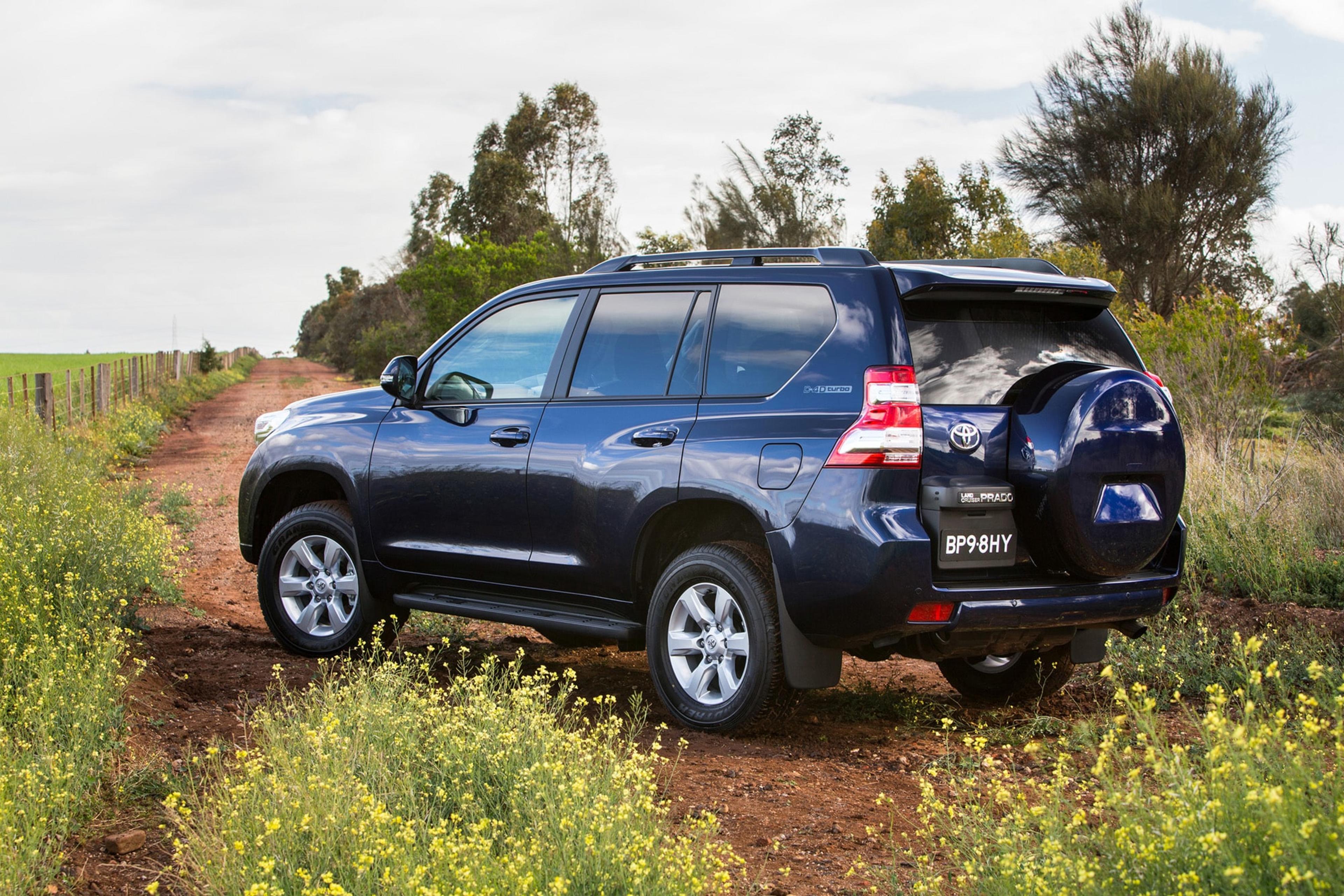

Target Market
Once upon a time, the Toyota Prado would have been the first choice for a family 4WD, however with the advent of the urban SUV, it perhaps isn’t seen like a family car like it used to.
It’s more and more often that the likes of a Toyota Kluger, Mitsubishi Outlander or Holden Captiva is the first choice today, compared to a few years ago. In most cases, they might be a compelling case but for families, the Toyota Prado does an astoundingly good job at being versatile and practical (we’ll get into this later).
For off-road enthusiasts, the capability that previous Prado models possessed is retained here. Clearance isn’t an issue and the exterior design has even been refined to make it even more suitable off road (raised headlamps for example).
New in the 2014 Toyota Prado update was the inclusion of Trailer Sway Control and emergency brake signals standard across the range. Both features are extremely valuable when it comes to safety and preventing an accident from occurring.
Essentially sway control works in conjunction with the stability control system and input from the vehicles sensors for steering, yaw-rate and acceleration. This allows the car to present dangerous swaying of a trailer and jack knifing.
Whilst the urban SUV has slowly taken over what the Prado used to own and share with the Pajero, there still seems to be a place for this 4WD.
Other features that are all standard on the GXL model we tested includes front fog lamps, roof rails, side steps, heated and retractable exterior mirrors, rear parking sensors, three-zone climate control, vehicle alarm, and privacy glass. There’s also a premium steering wheel, shift lever knob and handbrake handle plus a roller blind cargo cover to boot.
Making this one long list of features perfect for off road explorers and families alike.


Practicality
The Toyota Prado felt like it wasn’t about to let you down when needing to transport 5 kids, school bags and also pick up some shopping on the way home.
Tight car parks, whilst won’t be as easy as navigating with a Toyota Yaris, won’t be as hard to navigate as you would expect. The reversing sensors and camera make reverse parking a no hassle, and the large mirrors cover every other spot you need to when out on the road.
Thanks to the fold flat/hideaway third row, you won’t have big and ugly seats to work around when they aren’t in use. Simply fold them down and you could forget that you’re driving a 7 seater. It scores some points over the urban SUV’s here.
The keyless entry system is a godsend with full hands. Don’t bother about reaching for your pocket or handbag. You can even easily unlock or lock the car with two simple buttons on the rear door.
Speaking of the rear door, a welcomed addition is a gas strut to help manage the weight of the heavy door. Previously, if you had anything else but a flat surface, you would struggle not being slammed by the door.
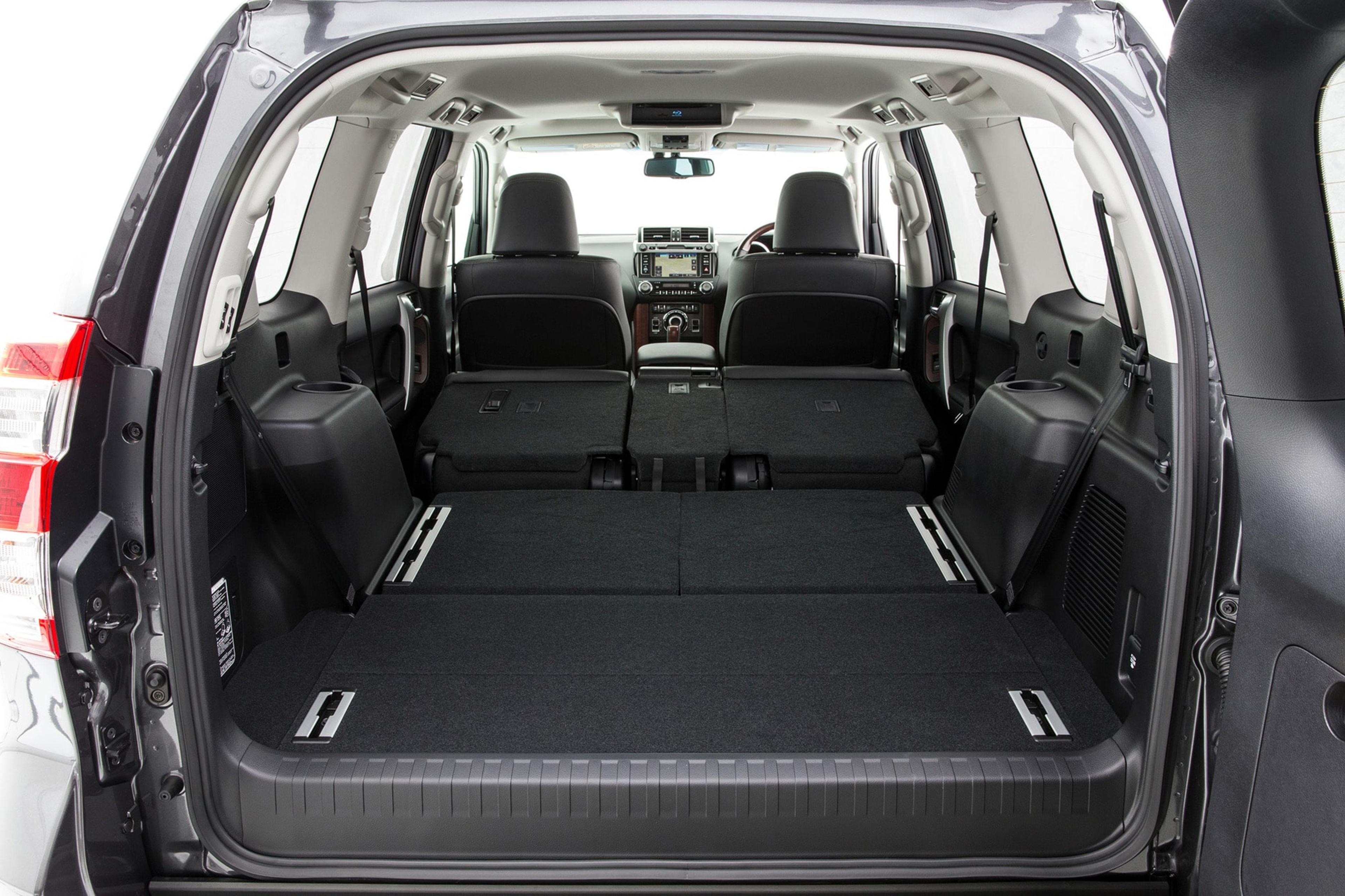
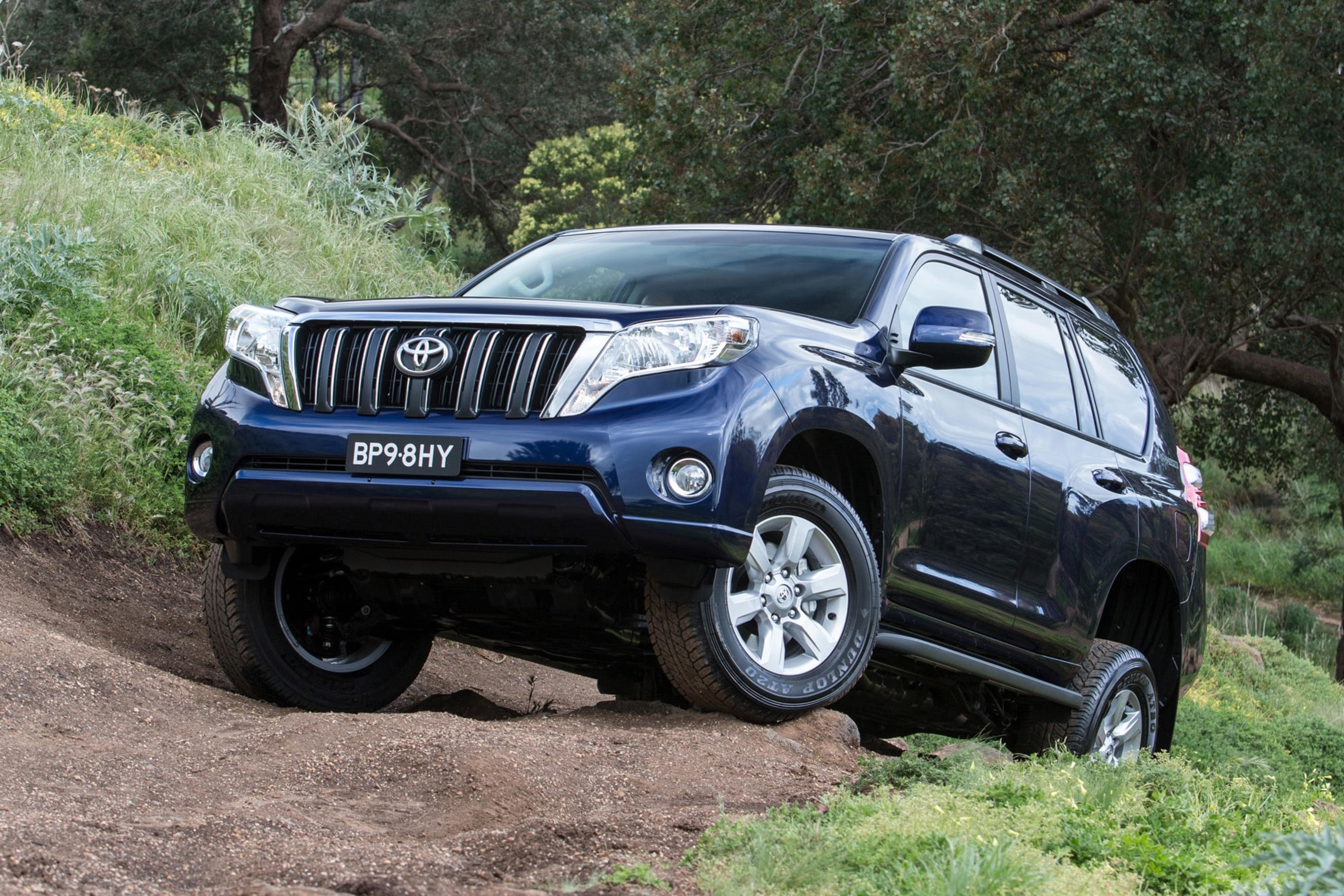
Drivability
Despite the turbo-diesel engine only producing 127kW of power, the most impressive aspect is the 410Nm of power that will leave quite the impression on those doubting its credentials for a big 4WD.
Whilst we didn’t get the greatest opportunity to test the Prado off-road, we did get to know it quite well on the road. Right where we expect most owners to enjoy them.
Navigating tight areas of the city, small car parks and the highway, the Prado was everything you’d expect it to be. Comfortable. Engine noise is kept down, there’s not a significant amount of road noise and visibility on the road is great.
The biggest surprise was the incredible fuel economy of the turbo-diesel when paired to the five-speed automatic. We achieved a fuel economy in our test just above the stickered 8.5 litres per 100km.
Combine that with its 150 litre fuel tank capacity (87 litre main tank and 63 litre reserve tank) and you should be able to travel 1600-1700km in one trip. Talk about impressive.
As for towing capacity, the Toyota Prado is able to tow 2500kg braked. The trailer sway control system should make managing trailers this big, no hassle at all.
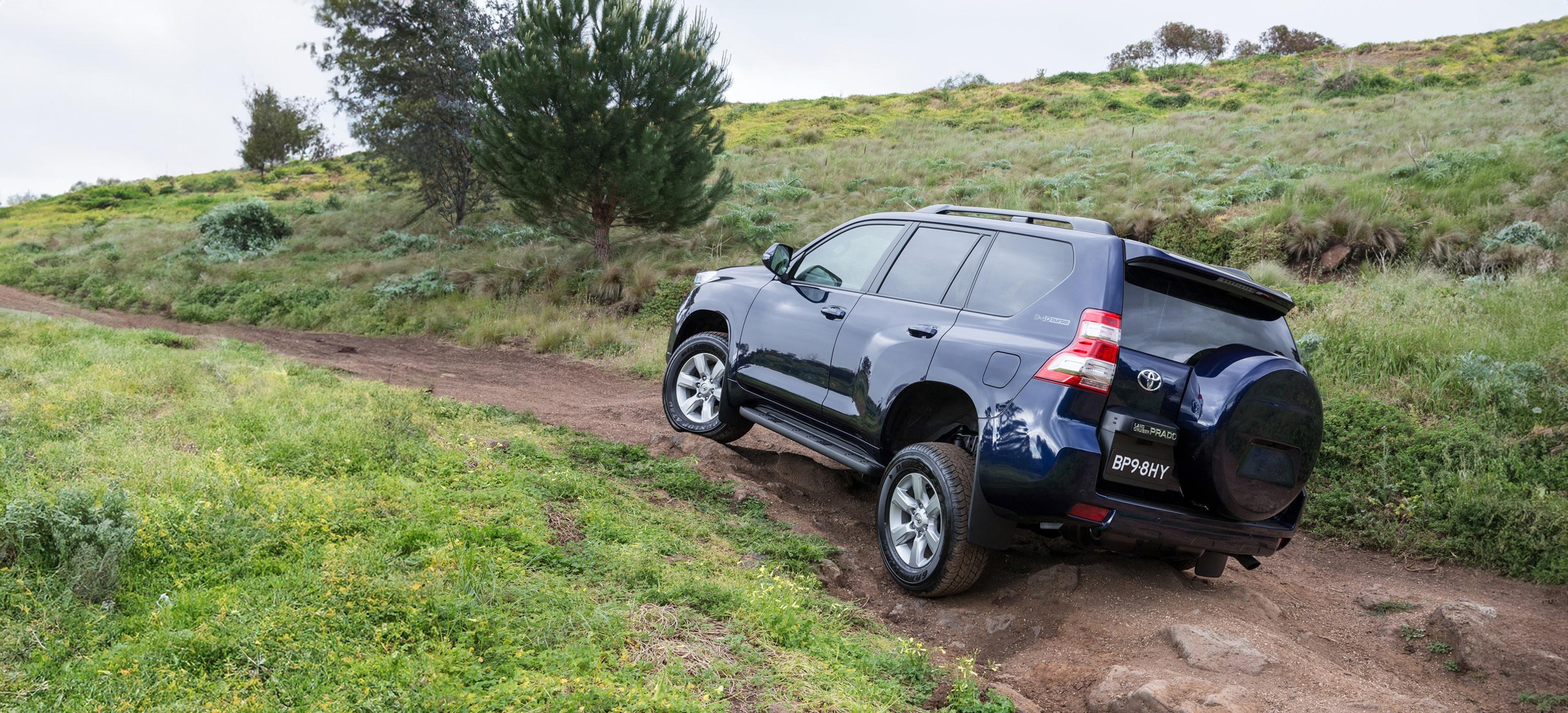
Cost
The Toyota Prado is everything you could possibly expect it to be, plus probably a little bit more. Don’t forget its Five Star ANCAP rating and its swag of safety features.
Our Prado GXL model that we reviewed starts in the low $60,000s with the five-speed automatic and offers reasonable value compared to its competition. On the market, most of its competition for off-road and on-road capability is smaller and less accommodating for most families. Confirm with Motorama Toyota for exact pricing.
Within that starting price there is Toyotas 3 year/100,000km warranty and their capped price servicing program. This should give some peace of mind for owners not wanting any unexpected surprises when it comes to ownership.
Conclusion
Whilst the Toyota Prado might not sell in the droves it once did before its market diversified, there’s still a great package to be had for those wanting something great for the family on the road and off the road.
Toyota has done a great job on adding extra value & safety to what was already a worthwhile package.
Is the Toyota Prado still relevant in today’s world of urban SUV’s? Yes.
This is why you should be considering it if you’re on the hunt for a family car or off-road explorer.

